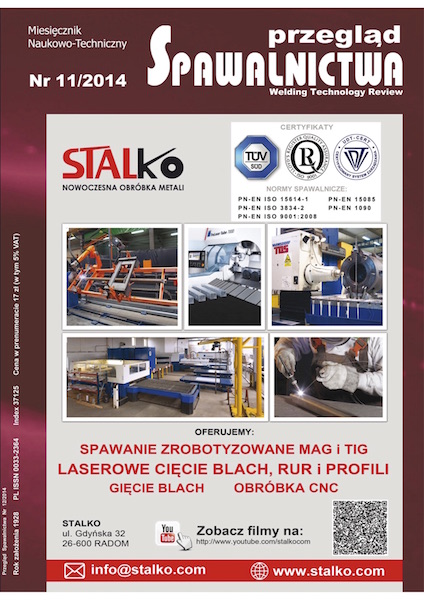Problemy badawcze kolumn pras hydraulicznych do wyciskania profili z metali kolorowych; Problems during inspection of columns in extrusion press for colour metals
Main Article Content
Abstract
Streszczenie
Prasy hydrauliczne do wyciskania (ekstruzji) to maszyny służące do wytwarzania elementów o stałym profilu poprzecznym. Głównym ograniczeniem wielkości odkształceń możliwych do uzyskania podczas jednej operacji jest wytrzymałość narzędzi. Jednymi z najbardziej obciążonych elementów maszyny są kolumny. Pęknięcie kolumny oraz postój maszyny generują ogromne straty finansowe oraz problemy logistyczne dla zakładu. Istotnym elementem przeciwdziałania tego typu awariom jest stosowanie okresowych badań nieniszczących. na podstawie zgromadzonych doświadczeń oraz za pomocą obliczeń możliwe jest prognozowanie pozostałego czasu pracy kolumn, w których zlokalizowano i określono wielkość nieciągłości materiałowej, co zapewnia ciągłość procesu oraz bezpieczeństwo pracy pracowników obsługujących proces produkcyjny.
abstract
Hydraulic press for extrusion is a device used to create objects with a fixed cross-sectional profile. Main limit of possible size of deformation during extrusion is durability of the machinery. The most tensed elements in press are the columns. Damage of the column and breakdown of the press can generate large amount of financial loss and logistic problems to production facility. Applying of periodically performed non-destructive testing methods can counteract to such situation. It is possible to forecast remained operational time of the columns by using collected data about location and size of located discontinuities and theoretical calculations. Such action provides continuity and safety during production process.
Downloads
Article Details
Creative Commons CC BY 4.0 https://creativecommons.org/licenses/by/4.0/
Welding Technology Review (WTR) articles are published open access under a CC BY licence (Creative Commons Attribution 4.0 International licence). The CC BY licence is the most open licence available and considered the industry 'gold standard' for open access; it is also preferred by many funders. This licence allows readers to copy and redistribute the material in any medium or format, and to alter, transform, or build upon the material, including for commercial use, providing the original author is credited.
References
Oberg E., Jones F.D., Horton H.L., Ryffel H.H.: Machinerys Handbook (26th ed.), New York: Industrial Press, ISBN 0-8311-2635-3, 2000.
Drozda T., Wick C., Bakerjian R., Veilleux R.F., Petro L.: Tool and manufacturing engineers handbook: Forming, SME, ISBn 0-87263-135-4, 1984.
